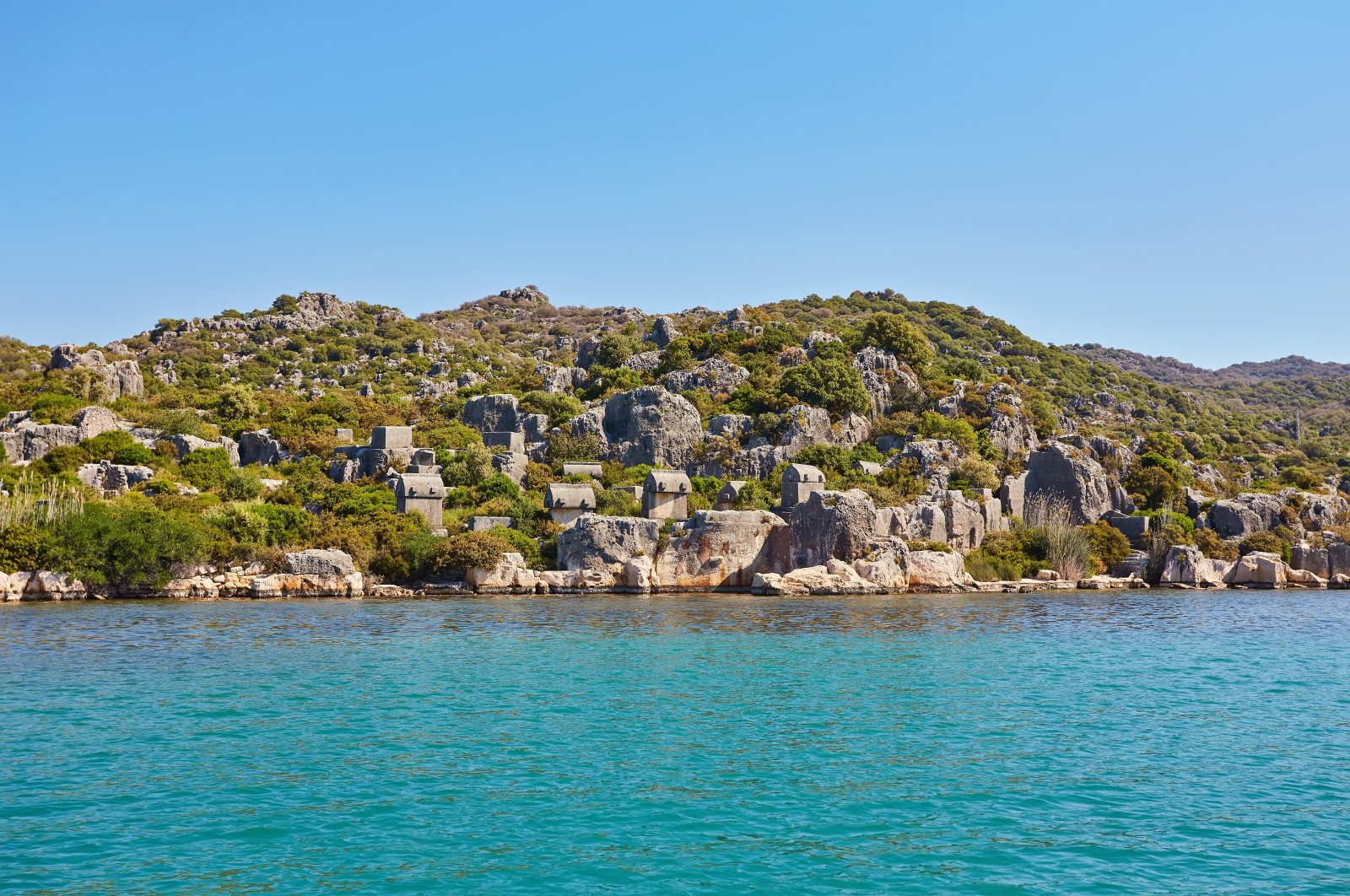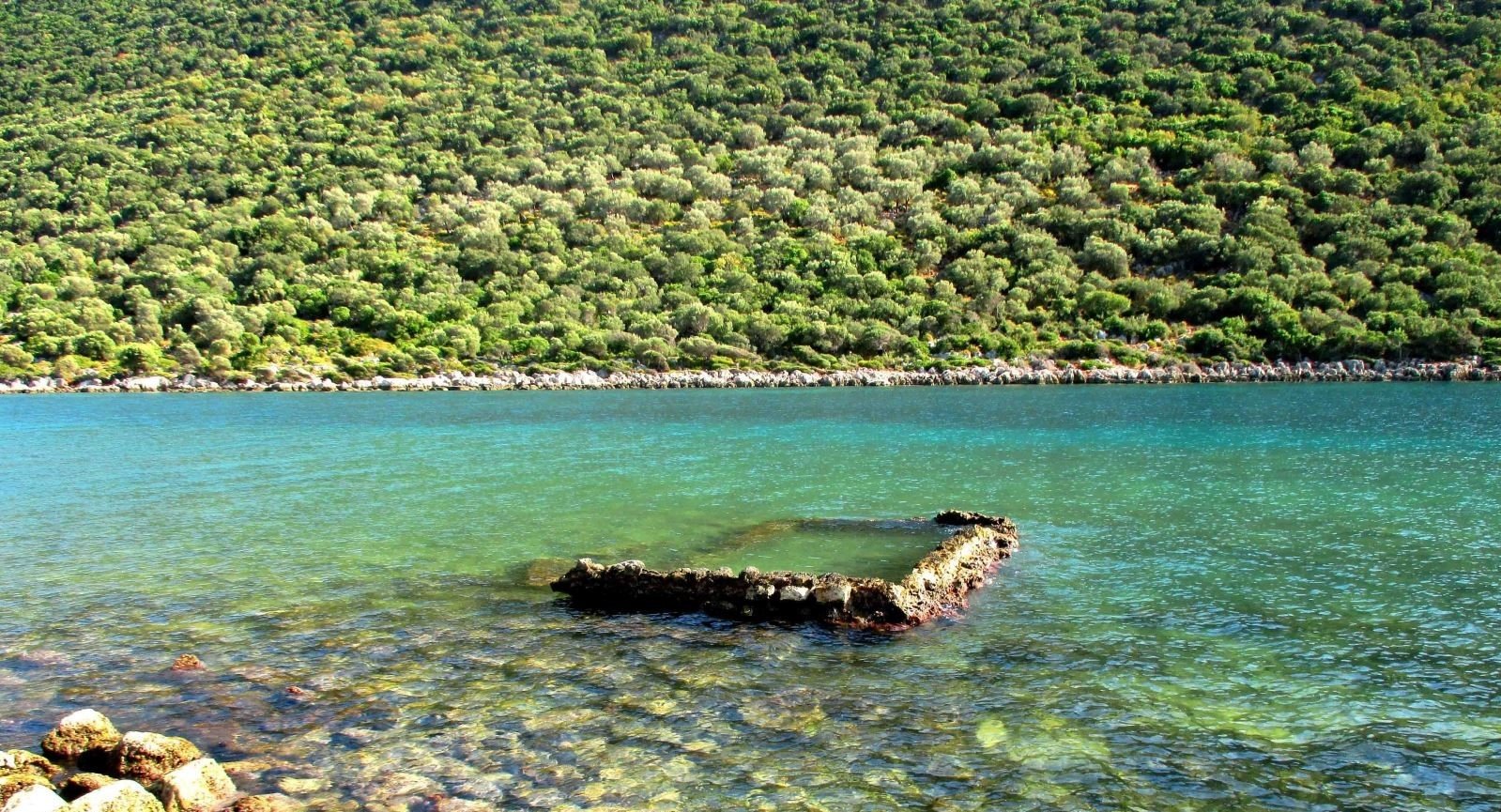
Wandering around the Mediterranean shore has always been fascinating and romantic thanks to its historical sites. The small ancient city of Aperlai in the region has a lot to offer to history enthusiasts
Who knows how many civilizations the waves hitting the shores of the Mediterranean have witnessed to date, how many songs of different languages they accompanied or carried these tunes to different fairy-tale cities around the world. By building sandcastles from the mystical words that have spilled onto the Mediterranean shores for thousands of years, one may feel the experiences of the ancient cities in these lands. Or setting the romance aside, one can simply set out on a mysterious journey by visiting the ruins of the ancient cities. Here is what a tour among the remains of the ancient city of Aperlai, located between today's Kaş district and the island of Kekova in the Mediterranean tourism gem of Antalya, may offer to enthusiasts.

Port cities of Lycia
In the north of the Lycian region, which is bordered by the Mediterranean coast's cool blue water in the south, there are mountains such as Akdağ and Beydağları with their majestic stances that seem very difficult to conquer. The region is mostly dominated by the Mediterranean climate. Lycia developed into one of the commercial centers of the Mediterranean with its port cities in the past.
The Greek historian and geographer Strabo said that although it was rugged and difficult to pass, the Lycian coast had extremely well-equipped ports. The archaeological remains showed that the importance of the Lycian ports increased especially during the Hellenistic period. Thanks to its very important position in Mediterranean trade, Lycia held the naval power in this period, as well. However, this opened the way for pirate attacks. Whereas unease was prevailing in the Mediterranean trade in this period, some cities cooperated with pirates. Yet, only the cities of Olympos, Corycus and Phaselis in Lycia chose to work with the pirates.
During the Roman period, the port cities established in the Lycian region began to develop in a magnificent way. Aperlai was a small one among these ancient cities.
Ancient port city of Aperlai
The name of the city, which is "Aprillai" in the Luwian language, means "stream strait." This small ancient port city is located at the beginning of the narrow and long Asar bay on the Sıçak Peninsula between Kaş and Kekova today. The name of the ancient city was mentioned in the works of late period writers like Gaius Plinius Secundus, called Pliny the Elder.
Silver coins minted in the Lycian language proved the existence of Aperlai before the Lycian Union. During the Lycian Union, Aperlai was at the head of a united group comprised of three or four small cities but shared "one vote," according to historical sources.
Aperlai signed and formed a "sympoliteia" (a type of treaty for political organization in ancient Greece) with Simena, Apollonia and Isinda. The people of this inner city of political emergence were mentioned in the inscriptions as "Aperlai people from Simena," and their original ethnic names were not used. The city was damaged after an earthquake in A.D. 141. Benefactor Opramoas of Rhodiapolis, who was the richest of the period, provided Aperlai with aid like he did in other Lycian cities and was instrumental in the restructuring of the city.
Tyrian purple, also known as Phoenician red, Phoenician purple, royal purple, imperial purple or imperial dye, is a reddish-purple natural dye produced by several species of predatory sea snails. According to some sources, the color, which was extremely difficult to obtain due to its expensive production, was produced in the city of Aperlei and sent to the nobles in many parts of the world through trade. Thanks to Tyrian purple, the people of the region were able to lead a rich life. Therefore, Aperlai was an ancient port city where purple and blue met.
Architectural features
The ruins of the city, located in the north of Asar Bay, are located at the foot of the hills descending toward the sea. The city walls, built using rectangular and polygonal techniques and supported by towers, start from the seaside and surrounded the whole city toward the acropolis. On the northern walls of the city, there are three square defense castles. The south wall of the city is polygonal and continues perpendicular to the slope of the hill. The western wall, on the other hand, is one of the best-preserved constructions in the ancient city and features three gates, one arched and two standards. There is a gate featuring a tower on both sides in the middle of the city. However, this structure, providing the entrance to the city, has been largely destroyed.
The remains of two Roman baths were found in the city. Two churches that reflect the early Byzantine architecture, built in a basilica plan and dating back to the A.D. sixth and seventh centuries, are also among the remarkable structures of the city. One of these small Byzantine churches is located in the northwest corner of the acropolis and the other is located in the southeast. The necropolis of the city, which has many Lycian sarcophagi, is located to the east of the castle walls.
Flooded structures
An area of approximately 15,000 square meters (160,000 square feet) of the city, which was built on a hillside, is under water today. The mole, port, a part of the city walls and many buildings in the south of the city have been gradually submerged due to earthquakes and the rise of the Mediterranean waters over time. The dock and pier walls, which are the continuation of the 700-meter-long fortification wall that defines the southern border of the city, are also under water today.
How to go?
There is no land access to the ancient city of Aperlei, so you can reach it by boat from Kaş or Üçağız. Another option is to walk through the Lycian Way. The ancient city can be reached by walking the approximately 7-kilometer (4.5-mile) road marked with red and white lines at the end of Kılınçlı village on the Kaş-Üçağız road. If you come to Aperlei, you can also visit other historical cities and structures in the immediate vicinity of the city.
